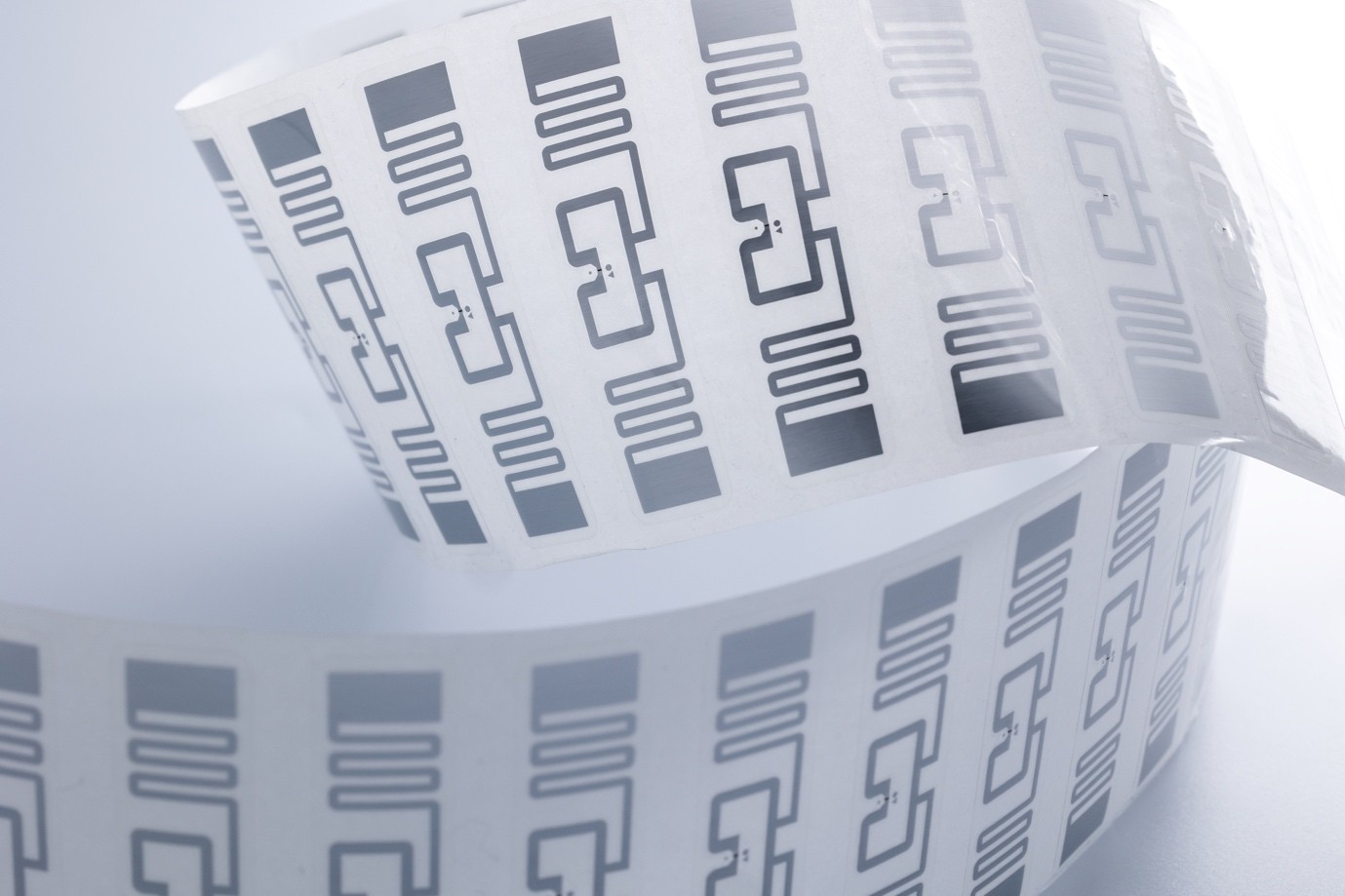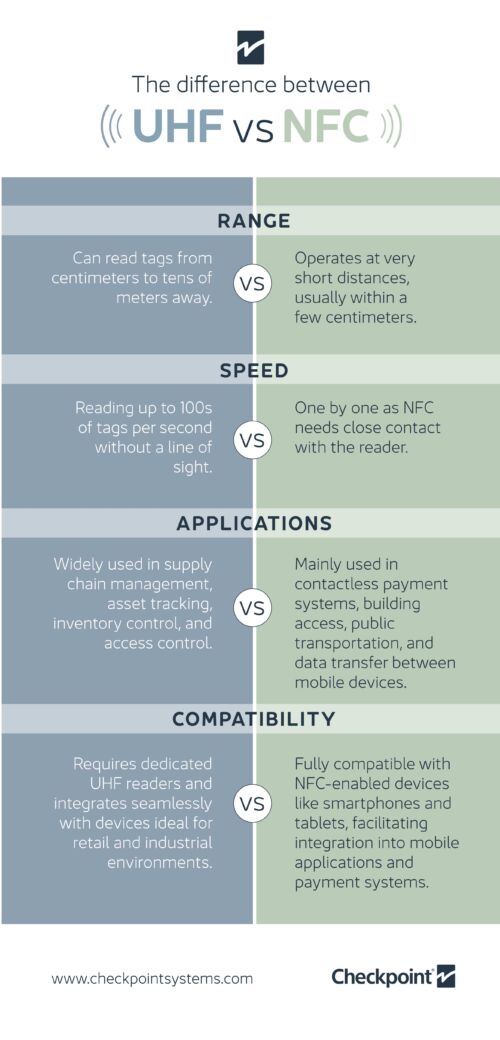Security and efficiency have become essential, and this is where RFID technology comes in. RFID is a key solution that enables the optimisation of processes in different environments and industries. From asset tracking to inventory management, RFID enables contactless identification and tracking, improving accuracy and reducing processing times.

In this article, we will explore the different RFID chip types according to their operating frequencies-low (LF), high (HF) and ultra-high (UHF) and how does an RFID chip work in different applications. We will also delve into the memory structure of UHF RFID tags and the benefits this technology offers in terms of security, traceability and process automation.
What Are RFID Chips and How Do They Work?
RFID (Radio Frequency Identification) chips are electronic devices that use radio waves to transmit information wirelessly. However, the chip alone cannot perform this function; it is part of the RFID tag, which consists of the chip and the antenna. Together they enable identification, tracking and authentication of objects without the need for physical contact.
The operation of an RFID system is based on three main components:
- RFID Tag: Contains the chip and an antenna that stores and transmits the information.
- RFID reader: works together with an RFID antenna, sending radio signals to activate and read the tag data.
- Software: Processes and stores the information received for analysis and use.
Thanks to this technology, it is possible to optimise logistics, improve access security and prevent counterfeiting in various sectors.
Common Types of RFID Chips and Their Features
RFID chips are classified according to frequency, which ultimately determines their range and the environments in which they are best suited:
- Low Frequency RFID (LF)
- Frequency: 125 kHz - 134 kHz
- Reading range: Up to 10 cm
- Applications: Access control, object identification.
- High Frequency RFID (HF)
- Frequency: 13.56 MHz
- Reading range: Up to 1 m
- Applications: Contactless payments, inventory management, supply chain traceability.
- Ultra High Frequency RFID (UHF)
- Frequency: 860 MHz - 960 MHz
- Reading range: Up to 10 m
- Applications: Asset tracking, inventory management, warehouse and logistics optimisation.
UHF vs. NFC RFID Chips: Key Differences
UHF (Ultra High Frequency) RFID chips and NFC (Near Field Communication) are two radio frequency-based technologies used for identification and wireless communication. Although they are often presented as opposing technologies, they can actually be complementary, depending on the context and application.
It is important to note that NFC is a specific form of high frequency (HF) RFID technology. That is, NFC is simply another way of referring to HF chips, meaning that both operate in the same frequency band (13.56 MHz) and share the same operating principles.
Frequency and range:
- UHF: Operates in a frequency range of 860 MHz to 960 MHz and allows tag reading at distances of up to 10 meters. This makes it ideal for logistics and inventory management applications.
- NFC: Operates on 13.56 MHz and has a much shorter range, typically between 4 and 10 cm, making it suitable for close and secure interactions such as mobile payments and product authentication.
Mode of operation:
- UHF: Can read multiple tags simultaneously, facilitating mass product identification in warehouses and supply chains.
- NFC: Operates in a one-to-one mode, enabling secure and personalised interactions, such as contactless payments and access control.
Specific applications:
- UHF: It is mainly used in inventory management, asset tracking and logistics, as it enables fast reading of multiple tags remotely.
- NFC: It is the standard technology for contactless payments, personal identification and product authentication, thanks to its bidirectional and secure communication capabilities.
Security and consumer use:
- UHF: Has enhanced security with data encryption, but its main focus is on mass tag reading efficiency.
- NFC: Incorporates advanced encryption and authentication protocols and is the preferred choice for financial transactions and secure data transfer.

Although UHF and NFC have key differences, they are not necessarily opposing technologies. In many environments, they can coexist and even enhance each other.
For example, in apparel stores with Self Check Out (SCO) systems, UHF can quickly identify products at the checkout, helping with inventory control, while NFC enhances consumer engagement by providing the customer with unique product information through their smartphone. In this way, the integration of both technologies optimises both operational efficiency and customer experience.
While UHF RFID excels in long-range tracking and inventory management, NFC is the better choice for secure, proximity interactions. Rather than choosing between one or the other, combining the two can offer a complete solution that spans from logistics efficiency to improved user experience.
Leading Industries using RFID Chips
RFID technology has revolutionised multiple industries by providing efficient, secure, real-time identification and tracking.
Below, we explore some of the key industries that benefit most from this technology:
Logistics and supply chain management
The logistics sector is one of the main drivers of RFID technology, especially with UHF chips that enable long-distance reading. Companies use RFID to:
- Track the movement of products and assets in warehouses.
- Optimise inventory management.
- Improve efficiency in loading and unloading goods.
Manufacturing industry
In industrial production, RFID chips allow to:
- Control the inventory of raw materials and finished products.
- Ensure that outbound shipments match orders placed by brands or retailers, helping to prevent human errors and optimise the entire supply chain.
- Ensure traceability on the production line.

Retail
Retailers use UHF RFID to:
- Conduct real-time inventories.
- Prevent theft and reduce losses.
- Improve customer experience with contactless payments and personalized promotions.
Aviation and transportation
RFID is key to efficient management in airports and transportation systems:
- Baggage and cargo tracking.
- Access control for passengers and employees.
- Maintenance and tracking of aircraft parts.
In conclusion, RFID technology has revolutionised multiple sectors thanks to its ability to identify and track objects efficiently and securely. There are different types of RFID chips, such as low frequency (LF), high frequency (HF) and ultra high frequency (UHF), each designed for specific applications, from access control and inventory management to traceability in the supply chain.
